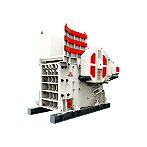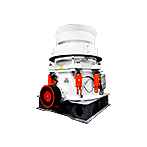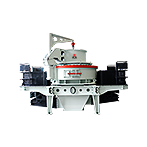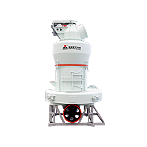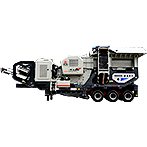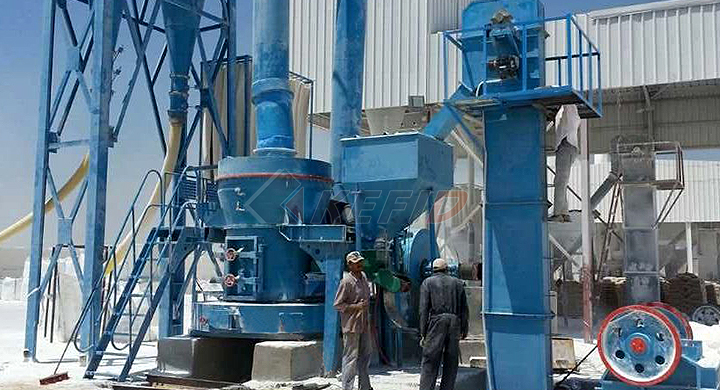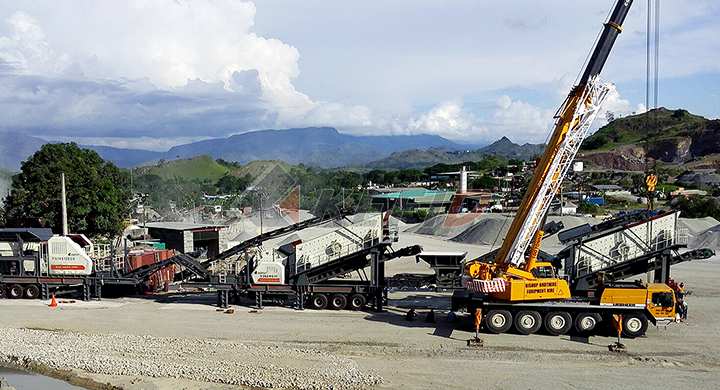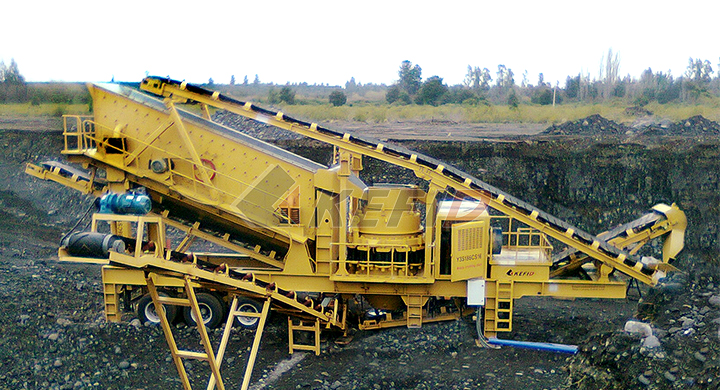магазин
extraction process of copper from chalcopyrtie
KEFID,Дробильно-сортировочное оборудование Китая высокого качества, стандартное дробильное оборудование. На протяжении более 30 лет мы занимаемся исследованиями и разработками и производством дробильного оборудования, дробления зданий, промышленных дробилок и экологически чистых строительных материалов, и предлагаем профессиональные решения и дополнительные продукты для создания ценность для клиентов.
Онлайн сообщение
extraction process of copper from chalcopyrtie

copper extraction and purification chemguide
The process The concentrated ore is heated strongly with silicon dioxide (silica), calcium carbonate and air or oxygen in a furnace or series of furnaces The copper(II) ions in the chalcopyrite are reduced to copper(I) sulphide (which is reduced further to copper metal in the final stage)Extraction of copper from sufidic ores, either by pyrometallurgy or hydrometallurgy, has various limitations In this study, a solvometallurgical process for the extraction of copper from sulfidic ore minerals (chalcopyrite, bornite, chalcocite and digenite) was developed by using an organic lixiviant (FeCl 3 as oxidizing agent and ethylene glycol (EG) as organic solvent)Solvometallurgical process for extraction of copper from

extraction process of copper from chalcopyrite
copper extraction and purification chemguidecouk Getting copper from chalcopyrite, CuFeS 2 Chalcopyrite (also known as copper pyrites) and similar sulphide ores are the commonest ores of copper The ores typically contain low percentages of copper and have to be concentrated by, for example, froth flotation before refiningExtraction Process Of Copper From Chalcopyrite A novel integrated alkaline process for the extraction of copper from chalcopyrite has been proposed and the chemistry of the main steps in the process including reagent recirculation has been demonstrated at ambient temperatures copper extractions of up to 52 are achievable after 580 h in solutions of glycine and air as oxidantExtraction Process Of Copper From Chalcopyrite

(PDF) Solvometallurgical process for extraction of copper
Extraction of copper from sufidic ores, either by pyrometallurgy or hydrometallurgy, has various limitations In this study, a solvometallurgical process for the extraction of copper from sulfidicCopper Mining and Processing: Processing of Copper Ores A Processing of Oxide Ore Oxide ores are generally processed using hydrometallurgy This process uses aqueous (waterbased) solutions to extract and purify copper from copper oxide ores at ordinary temperatures, usually in three steps: heap leaching, solvent extraction, and electrowinningextraction process of copper from chalcopyrite ME Mining

Copper Mining and Extraction Sulfide Ores
Stage 3: Roasting At this stage of the process, the chemical reactions begin They convert the copper minerals into copper metal We can illustrate the types of process using the example of chalcopyrite – CuFeS 2From the formula, it is clear that iron and sulfur have to be removed in order to produce copperExtracting of Copper from Other Ores Copper can be extracted from nonsulfide ores by a different process involving three separate stages: Reaction of the ore (over quite a long time and on a huge scale) with a dilute acid such as dilute sulfuric acid to produce a very dilute copper(II) sulfate solutionThe Extraction of Copper Chemistry LibreTexts

Extraction Of Copper | Mining, Concentration, Smelting
The major steps in the extraction of copper are Copper in Chalcopyrite is reduced to copper sulfide Just like in Blast Furnaces, calcium carbonate is added as a flux to create the slag Iron in Chalcopyrite is removed as Iron silicate slag Most of the sulfur in Chalcopyrite turns into Sulphur dioxide (SO 2)Extraction of copper from sufidic ores, either by pyrometallurgy or hydrometallurgy, has various limitations In this study, a solvometallurgical process for the extraction of copper from sulfidic(PDF) Solvometallurgical process for extraction of copper

Solvometallurgical process for extraction of copper from
May 04, 2020· A new solvometallurgical process In this new SIM² KU Leuven study, a solvometallurgical process for the extraction of copper from sulphidic ore minerals (chalcopyrite, bornite, chalcocite and digenite) was developed by using an organic lixiviant (FeCl 3 as oxidising agent and ethylene glycol (EG) as organic solvent) (see Figure 1) Figure 1Process steps to recover copper and glycine from alkaline aqueous solutions were also investigated The leaching of chalcopyrite flotation concentrate in glycine solutions was conducted at different leach conditions in a 125 L leach reactor with an agitated slurryA conceptual process for copper extraction from

extractionprocessofcopperfromchalcopyrite
Chalcopyrite (Cu) Sphalerite (Zn) Separation Metallurgical ContentThe Problem with separating Copper from Zinc by flotationThe Copper Zinc Process FlowsheetCRUSHINGROD MILLING The Problem with separating Copper from Zinc by flotation The treatment of heavy sulphide ores of copper containing zinc and pyrite is often extremely difficult particularly if soluble copper and sulphatesA conceptual process for copper extraction from chalcopyrite in alkaline glycinate solutions JJ Eksteena,⇑, EA Orabya,b, BC Tandaa a Department of Mining Engineering and Metallurgical Engineering, Western Australian School of Mines, Curtin University, GPO Box U1987, Perth, WA 6845, Australia bMining and Metallurgical Engineering, Faculty of Engineering, Assiut University, EgyptA conceptual process for copper extraction from

Copper leaching from chalcopyrite concentrates | SpringerLink
Abstract Chalcopyrite (CuFeS 2) is one of the most abundant copperbearing minerals, which accounts for approximately 70 percent of the world’s known copper reservesFor more than 30 years, a significant number of processes have been developed to leach copper from chalcopyrite concentratesThe process of extracting copper from higher grade sulfide ores involves: Physical Processes: Chemical Processes: Mining → Crushing → Grinding → Concentrating → Roasting → Smelting → Conversion → Refining (electrorefining) Example: Extraction of Copper From Chalcopyrite (CuFeS 2) Mining : digging or blasting to obtain the copperCopper Smelting Chemistry Tutorial

Bioleaching: Introduction, Methods, Application, Copper
The water after extraction of minerals, is reused after regeneration of bacteria ii Copper Leaching: To have an idea of bioleaching process copper leaching by bacteria is described as an example Covellite, chalcocite and chalcopyrite are generally used as copper ores for bioleaching processesCopper processing is a complicated process that begins with mining of the ore (less than 1% copper) and ends with sheets of 9999% pure copper called cathodes, which will ultimately be made into products for everyday useThe most common types of ore, copper oxide and copper sulfide, undergo two different processes, hydrometallurgy and pyrometallurgy, respectively, due to the differentCopper Mining and Processing: Processing of Copper Ores

METALLURGY OF COPPEREXTRACTION OF COPPERBLISTER COPPER
Large amount of copper are obtained from copper pyrite (CuFeS2) by smelting Ores containing 4% or more copper are treated by smelting process Very poor ores are treated by hydrometallurgical process For latest information , free computer courses and high impact notes visit : wwwcitycollegiateThis flowchart made of machinery icons explains or expresses in simple but clear terms the step of the Copper Mining and Copper Extraction Process Starting from either openpit or underground mining and using a different relevant treatment method for oxide or sulphide copper mineral (ore) Having a quick look now at how porphyry ores are treated and the metals extracted There are two mainCopper Mining & Extraction Process Flow Chart

Extraction of Copper from Copper pyrite | Grade 12 Science
The principal ore of copper is copper pyrite and copper is extracted from this ore The different steps in extraction of copper are: Crushing and Concentration: The ore obtained from mines are broken down into small piece by jaw crusher and then pulverized The ore being sulphide ore is concentrated by froth floatation processA process for extracting copper from a coppercontaining concentrate by comminuting the concentrate in the presence of a liquid dispersing agent which inhibits agglomeration and forms a pulp, and leaching the pulp in the presence of a silver catalystUSA Hydrometallurgical process for extracting

copper processing | Definition, History, & Facts | Britannica
The early development of copper probably was most advanced in EgyptAs early as 5000 bce, copper weapons and implements were left in graves for the use of the deadDefinite records have been found of the working of copper mines on the Sinai Peninsula about 3800 bce, and the discovery of crucibles at these mines indicates that the art of extracting the metal included some refiningMay 04, 2020· A new solvometallurgical process In this new SIM² KU Leuven study, a solvometallurgical process for the extraction of copper from sulphidic ore minerals (chalcopyrite, bornite, chalcocite and digenite) was developed by using an organic lixiviant (FeCl 3 as oxidising agent and ethylene glycol (EG) as organic solvent) (see Figure 1) Figure 1Solvometallurgical process for extraction of copper from

A conceptual process for copper extraction from
A conceptual process for copper extraction from chalcopyrite in alkaline glycinate solutions JJ Eksteena,⇑, EA Orabya,b, BC Tandaa a Department of Mining Engineering and Metallurgical Engineering, Western Australian School of Mines, Curtin University, GPO Box U1987, Perth, WA 6845, Australia bMining and Metallurgical Engineering, Faculty of Engineering, Assiut University, EgyptChalcopyrite (Cu) Sphalerite (Zn) Separation Metallurgical ContentThe Problem with separating Copper from Zinc by flotationThe Copper Zinc Process FlowsheetCRUSHINGROD MILLING The Problem with separating Copper from Zinc by flotation The treatment of heavy sulphide ores of copper containing zinc and pyrite is often extremely difficult particularly if soluble copper and sulphatesextractionprocessofcopperfromchalcopyrite

Extraction Of Copper From Chalcopyrite
Extraction process of copper from chalcopyrite Extraction process of copper from chalcopyrite for each project scheme design we will use professional knowledge to help you carefully listen to your demands respect your opinions and use our professional teams and exert our greatest efforts to create a more suitable project scheme for you and realize the project investment value and profitAbstract Chalcopyrite (CuFeS 2) is one of the most abundant copperbearing minerals, which accounts for approximately 70 percent of the world’s known copper reservesFor more than 30 years, a significant number of processes have been developed to leach copper from chalcopyrite concentratesCopper leaching from chalcopyrite concentrates | SpringerLink

project proposal for extraction of copper from
Innovations in Copper Mining amp Extraction Producing Three of the processes introduced above have made great strides in solving these problems for the extraction of copper from chalcopyrite The GEOCOAT™ Process A heap leaching process that is capable of bioleaching copper concentrates It does this by coating the concentrate slurry onto a support rock or substrate material and stackingIn the case of copper, it is worth extracting when there is about 2 kg of copper per 1,000 kg of ore (02%) Copper minerals are found in over one hundred varieties, although only a few have been worked for copper on a large scale The most abundant ores are chalcopyrite and bornite, which contain both copper and iron sulphidesExtraction Copper information provided by Copper

Why the Extraction of Copper from Chalcopyrite is so
Sulphide ores such as chalcopyrite are converted to copper by a different method from silicate, carbonate or sulphate ores So, extraction of Copper from it becomes very difficult & it is a lengthy process because(i) It contains many impurities in such a high amount that the percentage of Copper in it becomes only 23%The water after extraction of minerals, is reused after regeneration of bacteria ii Copper Leaching: To have an idea of bioleaching process copper leaching by bacteria is described as an example Covellite, chalcocite and chalcopyrite are generally used as copper ores for bioleaching processesBioleaching: Introduction, Methods, Application, Copper

Copper Smelting Chemistry Tutorial
The process of extracting copper from higher grade sulfide ores involves: Physical Processes: Chemical Processes: Mining → Crushing → Grinding → Concentrating → Roasting → Smelting → Conversion → Refining (electrorefining) Example: Extraction of Copper From Chalcopyrite (CuFeS 2) Mining : digging or blasting to obtain the copperJan 01, 2012· The iron in the chalcopyrite ends up converted into an iron (II) silicate slag which is removed Most of the sulfur in the chalcopyrite turns to sulfur dioxide gas This is used to make sulfuric acid via the contact process (copper extraction and purification) Overall equations forA Review on Novel Techniques for Chalcopyrite Ore Processing

Extractive Metallurgy of Copper Meaning, Method and Example
Reduction of copper in chalcopyrite to copper sulfide Addition of calcium carbonate as a flux just like in blast furnaces, in order to create the slag Removal of iron from chalcopyrite as iron silicate slag Most of the sulphur present in chalcopyrite converts to sulphur dioxide during this process Image will be uploaded soonA process for extracting copper from a coppercontaining concentrate by comminuting the concentrate in the presence of a liquid dispersing agent which inhibits agglomeration and forms a pulp, and leaching the pulp in the presence of a silver catalystUSA Hydrometallurgical process for extracting

Bacterial consortium for copper extraction from sulphide
Oct 30, 2013· Introduction While world demand for copper is growing, the minerals industry is increasingly faced with the need to process lowgrade ores, overburden and waste from current mining operations (Watling, 2006)Biotechnology is an area that has produced a considerable increase in recent years, mainly because occurrence of microbiological techniques and molecular biology, which help to
